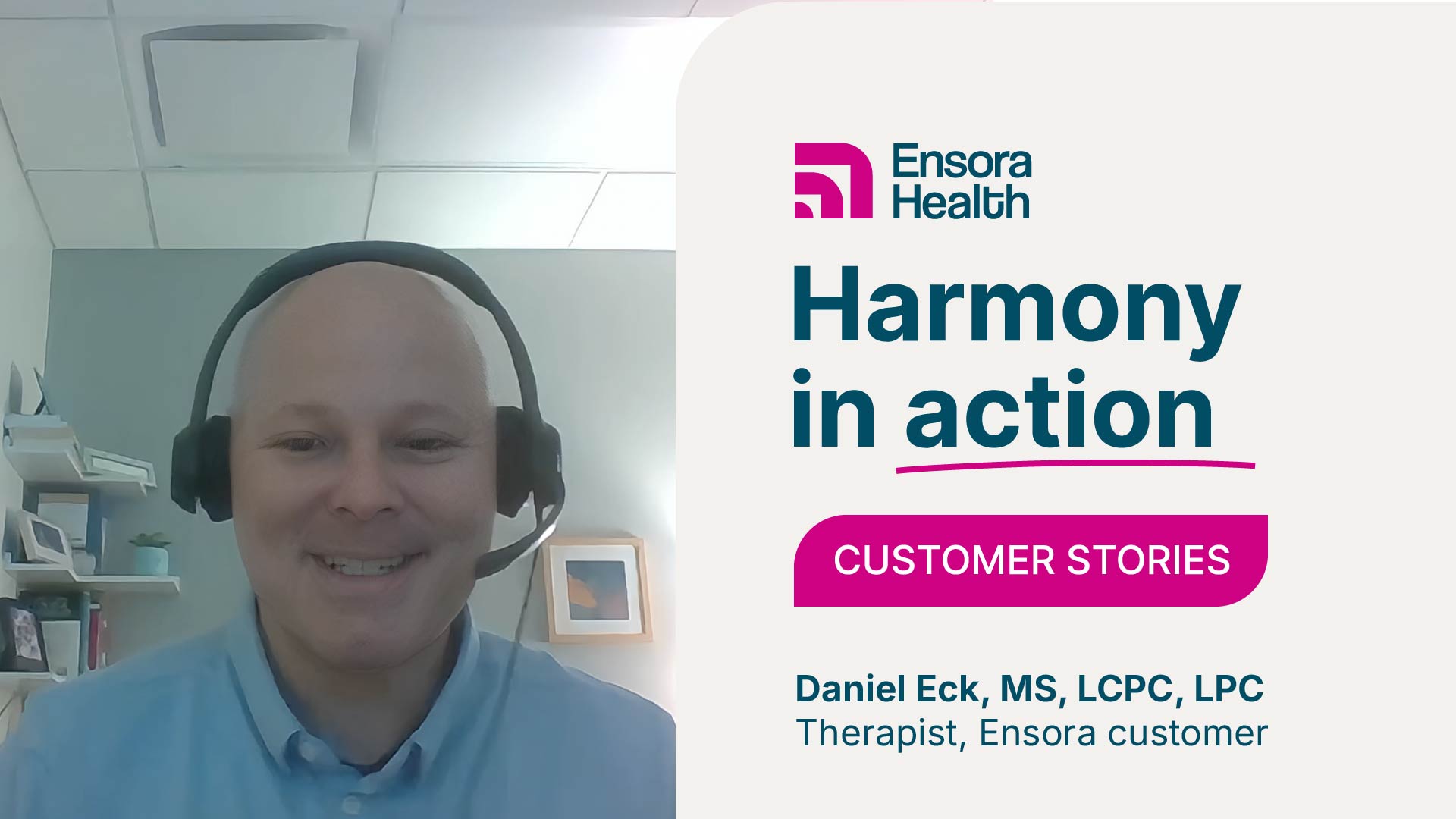Breathe, reflect, grow: How therapists can use downtime (and EHRs!) to thrive

Downtime in a mental health practice might feel like a luxury—or even stressful when you see your schedule thinning out. But the hours or days when client visits slow down, whether from seasonal shifts or unexpected cancellations, also offer a perfect chance to step back and strategize. These slower moments can become stepping stones for growth, especially when you tap into the rich insights hidden in your EHR (Electronic Health Record).
Think your EHR is just a digital filing cabinet for client notes? Think again.
It’s actually a goldmine of insights you can use to shape a stronger, more efficient practice.
Below, we’ll show you how to turn those slower afternoons into opportunities for growth, all through your EHR’s built-in reporting features.
Make data work for you
Using your EHR’s reporting features can help you grow without piling on extra stress. Here’s how to get started:
- Learn your EHR’s capabilities: Spend a little time getting familiar with your system’s reporting dashboard. A quick tutorial, webinar, or guide from your EHR vendor can reveal just how powerful these tools really are.
- Focus on your biggest pain points: Choose one area where your practice struggles (e.g., no-shows or denied claims) and start there.
- Set measurable goals: Once you’ve zeroed in on a specific concern, determine what success looks like and how you’ll track it. Clear goals help turn data from “interesting” to “actionable.”
- Collaborate with your team: Great ideas rarely flourish in a vacuum. Invite your team to review the reports together. Brainstorm solutions based on the data, encourage open communication, and assign action items to keep the momentum going.
How to turn downtime into strategy
1. Identify trends and patterns
Your EHR captures all kinds of patient information, from appointment history to treatment outcomes. Take a closer look at the data to uncover trends:
- Are your anxiety-focused clients responding best to CBT?
Consider offering more CBT training for your therapists.
- Do clients who are nearing treatment completion drop off in engagement?
Develop targeted communication strategies to keep them motivated through their final sessions.
By regularly monitoring these patterns, you can fine-tune your services to align with what works best.
2. Improve client outcomes
At the heart of it all, you want the best possible outcomes for your clients. Your EHR data can be your compass, guiding you towards even better care. Your EHR data provides insights into patient outcomes, helping you see where clients thrive and where they might need more support. For example:
- Track readmission rates, medication adherence, and satisfaction scores to understand where outcomes are lagging.
- Monitor patient engagement metrics such as portal use, messaging frequency, and appointment reminders.
Armed with these reports, you can create targeted interventions—whether that means adding extra check-ins for high-risk clients, offering different therapy modalities, or improving your follow-up processes.
3. Make your schedule more efficient
When cancellations and no-shows pile up, they affect both your revenue and your peace of mind. EHR tools can generate reports on:
- No-show rates
- Peak appointment times
- Recurring cancellation patterns (e.g., specific demographics or time slots)
Use these insights to reduce gaps in your schedule. Maybe automated reminder texts or updated cancellation policies will help. Either way, these data-backed decisions can boost your earning potential while keeping your day running more smoothly.
4. Identify revenue opportunities
Billing issues are one of the most common stressors for mental health professionals. However, many EHR platforms offer detailed financial reports that help you:
- Spot denied claims and identify why they were denied
- Pinpoint undercoded sessions that could be corrected
- Highlight missing documentation that may cause payment delays
Understanding these things can help you optimize your billing and coding processes, ultimately improving your bottom line and freeing yourself from some financial headaches.
5. Monitor and improve practice performance
It’s easy to get lost in clinical work and overlook the operational aspects of running a practice. Your EHR’s analytics can shine a light on crucial metrics, including:
- Average length of treatment plans
- Revenue generated per session
- Client retention and client outcomes
- Readmission rates
- Population health trends
Regularly reviewing these metrics helps you make thoughtful decisions about staffing, training, and scheduling. Reduced wait times and better patient flow can boost satisfaction across the board—for both your clients and your team.
6. Inform strategic planning
When you’re considering adding new services, hiring more staff, or investing in fresh technology, data from your EHR can guide you. You might notice patterns like:
- Increased interest in couple’s therapy
- A surge in adolescent clients
- Declining engagement in group sessions
Use your slower periods to dive into these trends and plan ahead. For example, if you see a spike in couples counseling requests:
- Share blog posts or social media content directed at relationship topics
- Offer advanced training to your team so they’re well-equipped to meet demand
- Promote relevant services to your community
7. Fine-tune workflows
Busy practices can inadvertently develop convoluted processes that slow down client care and add stress. Your EHR can help identify workflow bottlenecks:
- Are you finding that certain tasks—like intake forms or claim submissions—are taking too long?
- Do staff often retrace their steps or redo work because a process isn’t clear?
Let these insights guide you in reworking workflows. Even minor changes can free up time for higher-value tasks, like nurturing client relationships or fostering practice growth.
Start growing today
The information you need to transform your practice is likely sitting in your EHR system right now. Whether you’re looking to boost client outcomes, increase operational efficiency, or scale your services, your downtime—paired with the right tools—can deliver unexpected insights.
Begin by taking a closer look at those reports you’ve been skipping over. One click might unveil a range of opportunities to grow your practice strategically. Remember, growth doesn’t always require groundbreaking changes—sometimes, it’s the quiet moments of preparation that make all the difference.
If you’re ready to make those quiet moments count, explore an EHR solution built with therapists in mind, so you can use every spare moment to grow your practice, nurture your clients, and keep doing the work that matters most.






